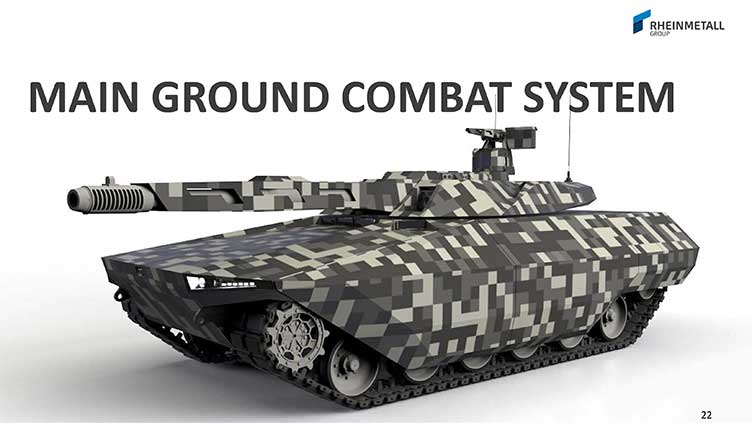Germany and France began to harmonize requirements and concepts, with the intention to formalize joint system architecture for their future main battle tank, currently known as the ‘Main Ground Combat System’ (MGCS). This future combat system is expected to succeed the Bundeswehr’s Leopard 2 and the French Army’s Leclerc beginning in 2035. Lead by the German side, MGCS is one of two major collaborations between France and Germany. The second program is the Future Combat Air System (FCAS), lead by France, in cooperation with Germany and Spain.
The aim of the study is to harmonize the operational requirements of the two armies into the final MGCS concepts drawn in the previous phase, to analyze further details, and to propose a common multi-platform architecture. The three contractual partners will assess various aspects of different concepts including:
- Technical feasibility in the projected timeframe allotted for the program
- Ability to fulfill the operational needs of both armies
- Efficiency and compatibility with national “systems of systems” (SCORPION for
France and Digitization of Land-Based Operations (D-LBO) for Germany).
What would the MGCV look like? too early to tell, but most likely, MGCS will be a family of heavy combat vehicles, that will provide the core of heavy, most lethal, and highly protected element, built to dominate any one-on-one direct effect engagement against peer opponent in a future battlespace. Most charts depict MGCS as a group of vehicles delivering a balanced ‘triangle’ – firepower, maneuver, and survivability.
![]() Subscribe to read the full article
Subscribe to read the full article

The formal commitment to the MGCS joint program was given at the Franco-German Ministerial Council meeting in Toulouse on 16 October 2019, by the defense ministers of both nations, Florence Parly and Annegret Kramp-Karrenbauer. Two months later, in December 2019, Krauss-Maffei Wegmann (KMW), Nexter Systems, and Rheinmetall AG established the ARGE working group (ARGE is the German acronym standing for Arbeitsgemeinschaft, or “working group”.) The signature of the contract last week, for the 20-month ‘System Architecture Definition Study Stage-I’ (SADS Part 1), marked the beginning of the MGCS Demonstration Phase. An investment of up to €150 million for SADS Part I will be split equally between Germany and France. Commencing in 2028, the procurement phase will likely be managed under the European cooperative defense equipment organization – OCCAR. Workshares in the SADS Part 1 are to be distributed equally between France and Germany.





















